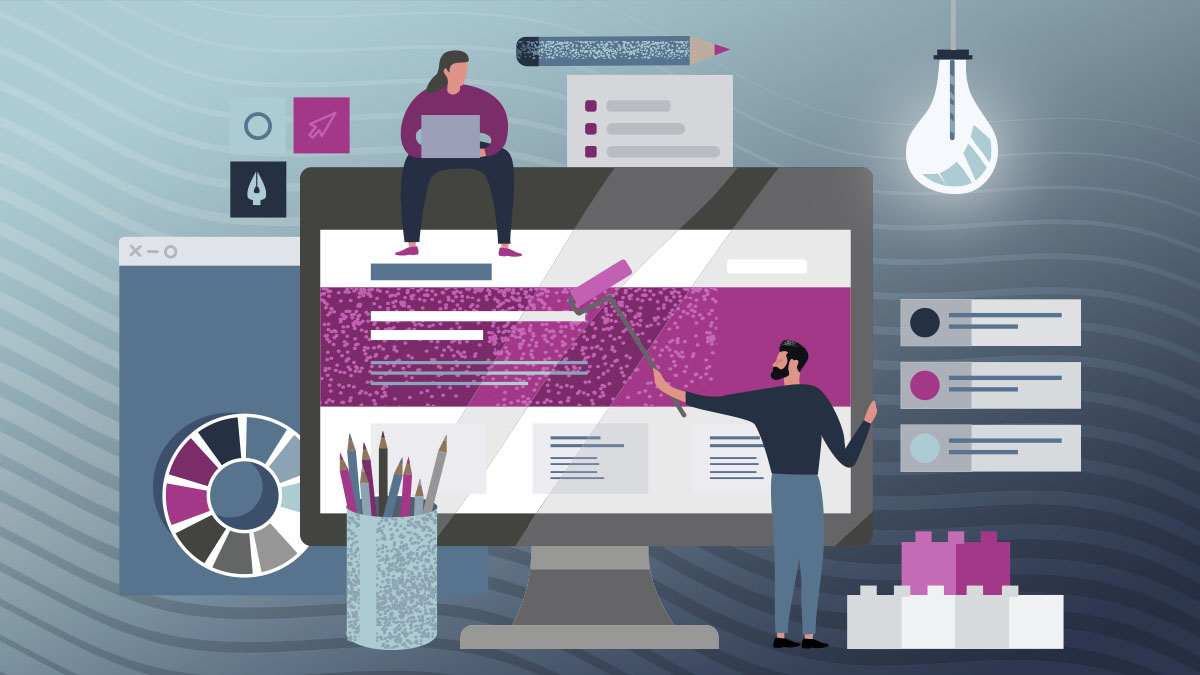The link between content marketers and graphic designers lies at the heart of the collaborative nature of the marketing industry. Both disciplines should collaborate frequently; therefore, communication is essential to resolve issues that will unavoidably arise during the creative process.
When it comes to developing content for an audience, content writers and graphic designers have different ways of thinking so there can be challenges. For example, finding a theme for the project is one task but figuring out how to align copy with the design is another. Despite various challenges, the thought processes also have some similarities — uniqueness and creativity.
In this blog, we will discuss the processes of visual vs. verbal thinking, collaboration, communication, and the end goal, a strategy that will ultimately benefit the client.
The Ways of Thinking
Both visual and verbal thinking are used to understand and interpret information, solve problems, make decisions, and remember information. However, visual thinking relies on images and patterns, while verbal thinking relies on words and language. Despite these differences, both types of thinking can be combined to facilitate learning, memory, and problem-solving.
For example, when working on an email with a promotional discount, the copy must include the discount code and the promotion. The subject line and preheader text will need to entice the reader to open the email. Then the body copy will need to be attention-grabbing in order to encourage the reader to take action.
While content plays a big part in getting potential customers to take interest in your product or service, the design of the creative piece (an email, a newsletter, etc.) needs to be visually appealing. Without photographic images or graphics, the reader may not give the email a second glance. Visual elements assist in communicating your message clearly and effectively, allow the content to stand out in a congested inbox, and ultimately generate more leads.
Massachusetts Institute of Technology states that 90% of the information transmitted to the human brain is visual and can process an image in just 13 milliseconds. The study found that our vision works to find concepts, and not only processes what we see, but makes decisions on what to look at next, all in a matter of milliseconds.
Furthermore, the design needs to explain the content of the email. The right images need to be selected by the graphic designer in order to match the nature of the copy.
Collaboration
There needs to be alignment between copy and design. The synergy between language and imagery refers to the relationship between the words we use to describe something, and the mental images evoked in our minds when we hear or read those words. Research has shown that the words we use can influence how we perceive and remember information and that aligning language with mental images can enhance our ability to understand, remember, and communicate information.
Communication
All marketing collateral, whether an email or newsletter, will include content and design so the two must collaborate to ensure both creators are on the right path. If not, there may be a misunderstanding on the direction and goal of the end product. If communication and collaboration does not happen at the beginning of the project, it can result in more work because you may have to go back and rethink the strategy. This leads to frustration, additional time, and lack of progress, when it could have been avoided had there been communication and collaboration from the beginning.
Strategy
When it comes to strategy, content writers and graphic designers must see eye to eye. To create great work, a strategic plan must be followed—creating a more efficient process and a better product. An efficient process needs to be set in place before moving forward on a marketing piece. So, what needs to be done to have a stronger creative strategy?
Here are a few steps you can implement to create a more efficient strategic process:
- Meet for 15 minutes before writing any copy or design – bounce ideas around before settling on one concept.
- Make sure photography and other assets are available, or feasible to create, before writing copy. The copy may require specific designs.
- Gain an understanding of the limitations of stock photo websites.
- Understand and respect each other’s work and processes.
- Be sure to work within the task’s time estimates and deadlines. Coordinate with account managers if more time is needed.
- Once the task is completed and approved by the account manager and client, revisit what worked and didn’t to improve and streamline the process moving forward.
Time
Time is an important factor that needs to be considered during the creative process. The right amount of time needs to be allotted for a series of steps in both the copy and design process, such as idea generation, copy experimentation, etc. If you don’t typically set your own time estimates for a project, it is vital to talk with the account manager to let them know you need time dedicated to the planning process.
Conclusion
Copywriters and designers can establish a productive, solid and successful working relationship by being open to compromise, setting reasonable expectations, and discussing ideas, all within the agreed upon time estimate. By working in harmony, collaborating, and communicating, a balanced outcome can be quite simple. While communication can be challenging, the goal is to create outstanding work that you can be proud to put in front of a client.
